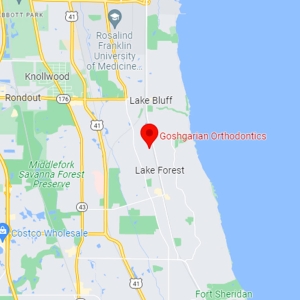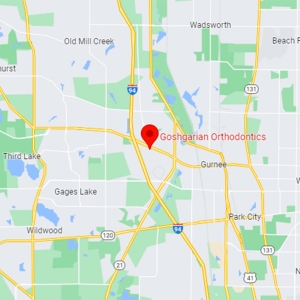Two-Phase Treatment
Two-Phase Orthodontic Treatment in Lake Forest and Gurnee, IL
What Is a Two-Phase Orthodontic Treatment?
Two-phase orthodontic treatments are specifically designed for children. Two-phase orthodontic treatment in Lake Forest, IL combines teeth straightening and crafting a functional bite.
When Is a Two-Phase Orthodontic Treatment Recommended?
A dentist in Gurnee, IL will typically recommend a two-phase treatment when your child meets one or more of the following conditions.
- Late or early loss of their baby teeth.
- Misplaced or crowded teeth.
- Underbites, overbites, or crossbites.
- Biting or chewing problems.
- Thumb-sucking after the age of five.
- Any other oral condition that is best treated using orthodontics at an early age.
What Is the Phase One Orthodontic Treatment?
The phase one treatment is performed before all your child’s permanent teeth have come in. This is usually between the ages of six and ten and is only recommended if your dentist in Lake Forest, IL feels it will make a significant difference in the outcome.
What Therapies Are Used in Phase One?
- Headgear.
- Space maintainers.
- Functional appliances.
- Specialized retainers.
- Expansion appliances.
The Resting Period
At the end of phase one, your child’s teeth are still not in their permanent position. This will occur after phase two. However, there is a resting period between phases one and two. This is when your child’s remaining permanent teeth are left alone, so they can erupt. During this time, your dentist in Lake Forest, IL will monitor the progress of your child’s teeth and make treatment recommendations as necessary.
What Is the Phase Two Orthodontic Treatment?
Phase two orthodontic treatment is used to combine tooth straightening and to achieve any physical oral changes needed. Phase two occurs between the ages of 11 and 12 and is when your child’s braces are placed. This phase lasts about 12-20 months or so.
What If a Two-Phase Treatment Isn’t Used?
If your dentist in Gurnee, IL recommends a two-phase treatment, and you decide to forego this option, it could result in the need for a more invasive treatment later in your child’s life. Additionally, if you wait, it’s possible that the more invasive treatment might not be enough to completely fix your child’s dental issues. Therefore, opting for early treatment is recommended if you want to achieve lasting results.


